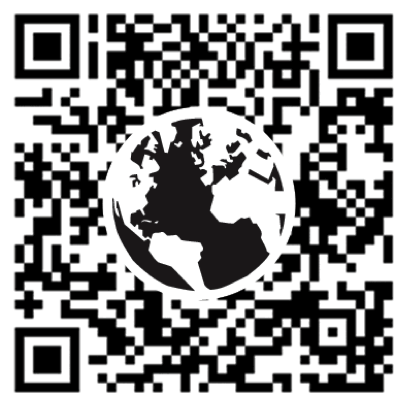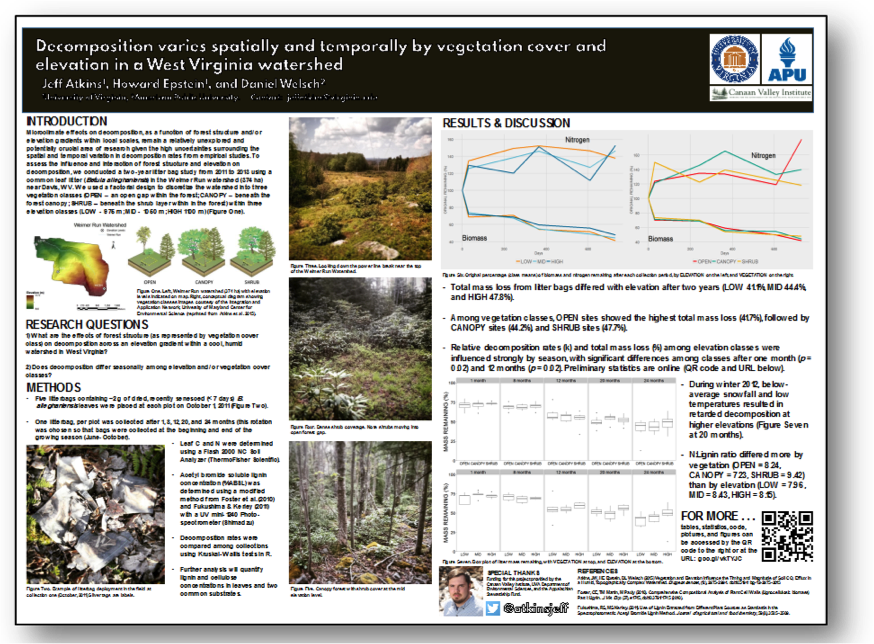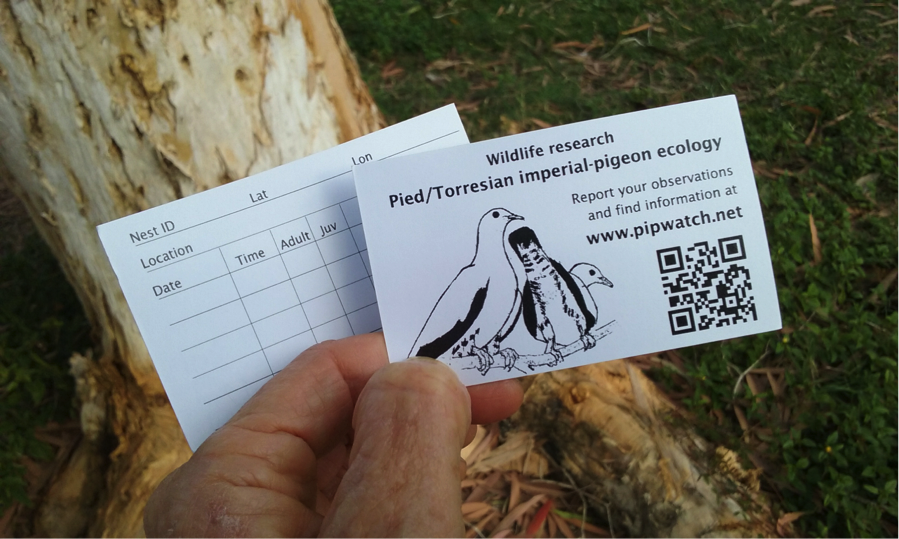
Using QR codes to communicate science – part 3
By: Claire Moore, Shelley Spear, Kristin Davis, and Sara Bombaci

In part 1 of our series on using quick-response (QR) codes to communicate science, we offered some background information on the tool, suggested possible uses, and provided “how-to” instructions for generating and effectively implementing your own QR code. In part 2, we assembled examples of interesting ways that people are currently using QR codes to communicate science into a short video.
In this third installment about using QR codes to communicate science, we reflect on the usefulness of this tool with the help of two scientists who share real-world perspectives on using QR codes to connect with their audiences.
Jeff Atkins, a Ph.D. candidate in the Department of Environmental Sciences at the University of Virginia, used QR codes on two scientific posters he presented at conferences. He used the QR codes to link attendees with 1) a time-lapse video and 2) an on-line appendix containing model and statistical information not included directly on the poster. We asked him to tell us about the biggest benefits he saw from using QR codes in his work.
Jeff replied, “I think given the prevalence of smart phones, at a large conference like AGU [American Geophysical Union] or even ESA [Ecological Society of America], when you are presenting a poster you can utilize QR codes to link to additional resources. I used mine to link to a page that not only has more information about me and my research but also has multimedia resources. In the case of my AGU poster, it links to a time-lapse video of the wetland we were working in. The wetland dried up over the course of the summer and the video shows that rather dramatically. It’s a cool 2 minute bit of video that really drives home the research point.”

When asked about what feedback he has received from people who noticed his QR codes, Jeff answered, “Everyone thinks they are great. The first thing they say is, ‘That is so cool.’ And the second is, ‘Does anyone ever use it?’ The answer to the second one is sparingly. But it works for me.”
We asked Dr. Julia Hazel, Adjunct Research Fellow at the College of Marine and Environmental Science at James Cook University in Australia, if she would recommend using QR codes to her colleagues to help communicate science in new ways. She responded, “Potentially yes, but a minor recommendation. Much more important is the content that will be provided via the QR code or other access method.”
Dr. Hazel brings up a great, cautionary point, and one that we wholeheartedly agree with, as mentioned in part 1 of our series.
Linking a QR code to content that was not thoughtfully developed to communicate the intended message detracts from the usefulness of the technology, or worse, confuses the user’s understanding of the topic.
(From http://nrelscience.org/2015/09/29/link-and-learn-how-to-use-qr-codes-to-communicate-science/.)
Dr. Hazel uses QR codes in a small citizen-science project to provide participants with a quick and easy way to access a data entry web page via small note cards printed with a QR code and website on one side, and data collection table on the other (to take notes in the field when cell service or internet access is limited).

She additionally offered, “I would not use a QR code alone without text information. I meet many people who prefer plain text URL and many who prefer Google search.” This is good to keep in mind when choosing how and where to place QR codes to link users with information. QR codes can be a helpful tool to provide easy access to supplementary details, but their use should not replace context-specific on-site material. This is particularly true when a target user does not have a QR reader-equipped mobile device or cell service/internet access is less than optimal.
“A QR code is merely a utility, one among many ways to access our website. A QR code in itself is not an important topic for us… enhancing communication via the website is important for our science,” Dr. Hazel concluded.
As we have seen throughout this series, there are countless ways that QR codes can be used to connect people and information. QR codes are one possible tool among many that help communicate science with a variety of audiences. They should be used to enhance a user’s experience without replacing relevant information when and where it is most useful. And importantly, QR codes are not an end in-and-of themselves. The ultimate goal remains finding effective and meaningful ways of communicating science to help us all better understand and appreciate the world we live in.